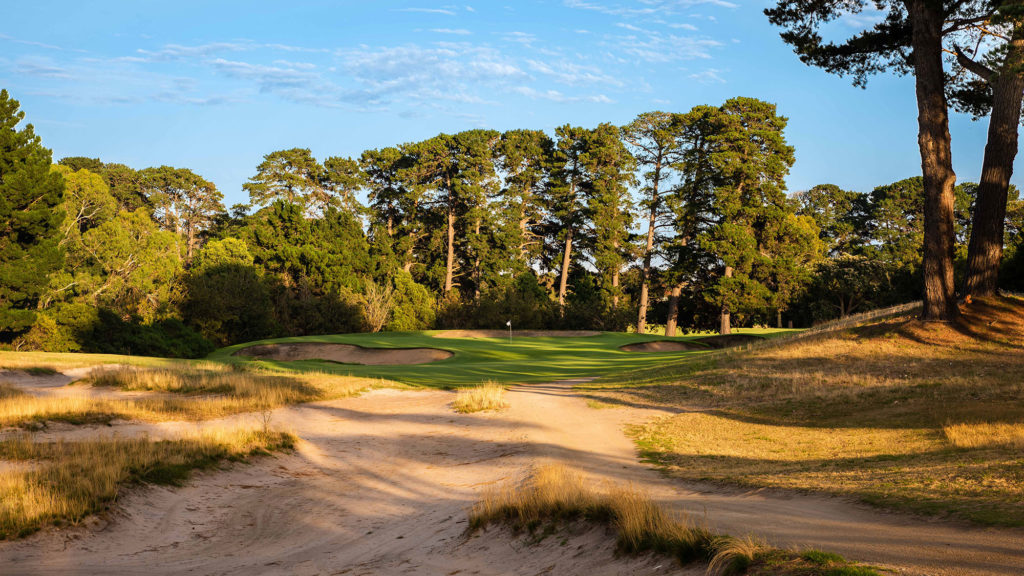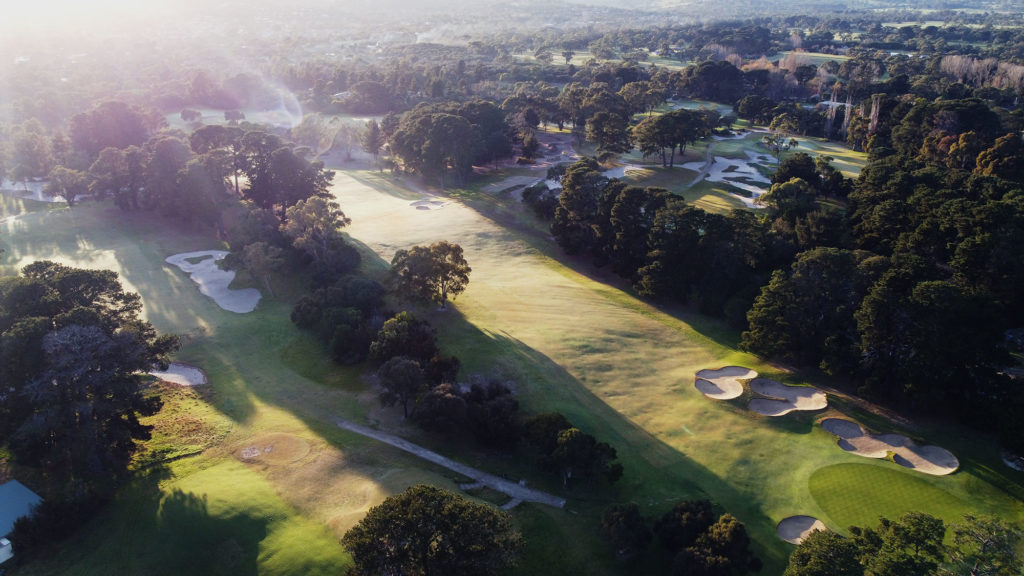Hosting two significant tournaments at opposite times of the year is illustrating Rosebud Country Club’s versatility while also highlighting the 36-hole facility’s value to the busy Mornington Peninsula golf scene.
Geography dictates that Rosebud Country Club is the first golf course visitors to Victoria’s perpetually popular Mornington Peninsula reach when travelling down the freeway from Melbourne, yet historically the 36-hole venue was bypassed by golfers planning a trip to the region. Not anymore. In recent years in particular, Rosebud has proven its value to any golf itinerary as fewer and fewer golfers whizz past without stopping.
“It was the line people would give us: ‘I drive past this place every time I go and play golf,’” says Rosebud chief executive Danny McGrath. “But the experience people have when they come here is great. Whether it’s the staff, the food or on the two courses. That’s our asset, so that’s what people come here for, first and foremost.”

A cocktail of factors has amplified Rosebud’s place on the map, including its status as the first non-European location for the DP World Tour’s qualifying school, which will finally take place from August 30 to September 2. It’s a moment two years in the making after COVID-19 prevented the original staging in 2020 and again last year.
Rosebud will be a First Stage qualifying venue for the circuit formerly known as the European Tour. It will also offer the local contingent an advantage after Rosebud re-entered the Australian tournament scene to host The Players Series each of the past two years, won by Brad Kennedy (2021) and Todd Sinnott (2022). Hosting the unique treble-field (men, women and juniors) concept at the height of summer was a masterstroke for Rosebud, which long ago was home to the 1976 Australian PGA Championship, won by Billy Dunk for the fifth time. The region is usually bustling at that time of year as school holidays end and especially when the Australia Day public holiday matches up. But more than that, Rosebud has now twice had the chance to show off the portions of the North course to undergo architectural improvements at the hands of Ogilvy Cocking Mead.
One of the most sought-after firms in the business, OCM has a long-range masterplan for both Rosebud courses, the first touches of which are acutely evident, mostly through the green complexes, bunkering and tree management. While the initial focus has been on improving the front nine of the North course, the inward nine has long owned a strong reputation even before OCM makes its enhancements.
“The back nine of the North course, I’ve been listening to people, and they say it’s one of the best nines on the peninsula. And it really is,” McGrath enthuses, adding that OCM is likely to come back to assess the next stage later this spring. “Mike Cocking knows it’s a blank canvas here with the work that’s possible.”
Rosebud was formerly a pine forest, which is not difficult to tell when you tour the site. Part of OCM’s edict was to remove some pines but trim many others, particularly the branches in the 10 or so metres closest to the ground. This had dual benefits. Firstly, the vistas of the course were opened considerably by the prudent pine removal and trimming of limbs on many that were retained. The fulsome foliage had disguised much of the undulation within the land, which is more prevalent than first impressions reveal. So many horizontal branches were also preventing escape routes and suffocating the course, but those cavalier recovery shots are now back as an option after a wayward shot. The course also looks and plays far better as a result. Australian Golf Digest’s panel of Top 100 Courses judges agree, promoting the North course to 84th spot in the most recent ranking – its first time back on the list since 1991.

World attention
The TPS event in summer represents a far different proposition for course superintendent Ian Todd and his staff compared to the late-winter dates of the upcoming DP World Tour qualifying school. Not that he’s concerned, mind you. As the course superintendent at Victoria Golf Club for more than 20 years prior to moving to Rosebud, he’s well versed when it comes to tournament preparation, even if the winter timing is unfamiliar.
“It’s good to have different focuses; one mid-year and a focus at the start of the year,” Todd says of the two tournaments. “It’s just a matter of getting it up as good as we can at that time of the year. In the winter, we know there are going to be challenges with weather. But we’ll do the best we can, as we usually do. We think it’s going to come up pretty well.
“The tournament exposure has been really great for the club. To even be considered to be the first club outside Europe to hold this event is such a huge feather in the club’s cap. It’s a massive achievement to be aligned with the DP World Tour and to be able to use their brand. It’s funny how Rosebud’s become flavour of the month.”
Indeed it has, especially after a sense of unfulfilled potential hovered over Rosebud, potential the club has gradually let shine.
“The club now feels as though it’s a really good club and an important club – and it is an important club down here, but one that was sort of forgotten,” Todd says. “Before I came here, I was looking at it and thinking, What is Rosebud Country Club? What defines it? Because it’s never been in the conversation. And once I got down here and had a look around the property, it soon started to get into the conversation with Sorrento, Portsea, The National, St Andrews Beach… But Rosebud was never in that conversation of the good courses down here, and it’s a really good course.”
That it is, today more than ever. Whether you play the more vaunted North course or the neat-and-tidy South, Rosebud is a meandering journey across land with ample subtle features and layouts that accentuate them. The OCM bunkering is a highlight, especially the ways in which the sand either signals the intended way to play the hole or lures you into a daring shot on a bold line. The first two TPS fields have raved about it, while members and regular green-fee golfers do likewise.

Yet sometimes it’s the seemingly minor things that can make a difference. Other than a couple of member events each year, the club no longer ‘cross-pollinates’ its courses. Formerly, the four nines were mixed up to also create East and West courses, however now the standard offering is just the North or South. At such a busy club – there are 16 competition fields each week – focusing on two configurations rather than four has improved maintenance practices plus course playability and condition.
“It wasn’t always memorable,” Todd says of the four rotating nines. “I think a lot of that was to do with, ‘Well, what course are we playing?’ It was great from a marketing perspective that you’ve got numerous courses and everything coming back to the clubhouse, but with that you lose your identity as well. So to separate the two courses – the North was always going to be considered the better course because of the undulation in it – it’s given it its own identity.
“When you had the four nines and it was crossing over and you’d play North, South, East, West, it’d lose some momentum on how you’d present the course. Now, having two separate courses, you can present the main course much better every day for play. That’s been a real winner.”
Todd was also keen to tackle the one-percent things such as flagsticks, which no longer feature three different colours to indicate position but instead have a classy, uniform look that would not be out of place on the Melbourne Sandbelt. That’s good company for Rosebud Country Club to keep.
THE DETAILS
Rosebud Country Club
Where: Boneo Rd, Rosebud VIC 3939
Clubhouse: (03) 5950 0800
Golf Shop: (03) 5950 0888
Web: rosebudcountryclub.com.au
